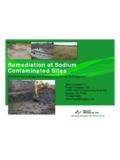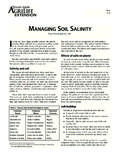Transcription of COMMON PROBLEMS OF MOUNTAIN LAUREL - Connecticut
1 Dr. Sharon M. Douglas Department of Plant Pathology and Ecology The Connecticut Agricultural Experiment Station 123 Huntington Street, P. O. Box 1106 New Haven, CT 06504 Phone: (203) 974-8601 Fax: (203) 974-8502 Founded in 1875 Email: Putting science to work for society Website: COMMON PROBLEMS OF MOUNTAIN LAUREL MOUNTAIN LAUREL , Kalmia latifolia, is a native plant and the state flower of Connecticut . There are several diseases that commonly occur on MOUNTAIN LAUREL in landscapes and nurseries throughout the state every year. These include fungal leaf spots and blights, winter injury, drought injury, and chlorosis.
2 The occurrence and severity of these diseases are influenced by many factors, including the severity of infection and amount of overwintering inoculum from the previous year, the weather at the time of leaf emergence, cultural practices, and the species or cultivar planted. FUNGAL LEAF SPOTS AND BLIGHTS Causal Agents: Several genera of fungi are associated with leaf spots ( , Cercospora, Phyllosticta, Septoria) and leaf blights ( , Phomopsis). Symptoms: Symptoms of leaf spots and leaf blights usually develop on current season foliage of MOUNTAIN LAUREL in mid to late summer. However, in rare cases, infections may not be visible until the following winter or spring after infection. Leaf spots appear as dead areas of tissue scattered over the surface of the leaf.
3 They usually have distinct margins that are often darker than the brown, black, tan, or reddish centers. Spots are usually visible on both upper and lower leaf surfaces (Figures 1 and 2). However, the spots can vary in size from pin-head to those that are more diffuse or even coalesce over the entire leaf. Small, black fruiting bodies may be visible in the spots (Figure 3). Figure 1. Fungal leaf spot of MOUNTAIN LAUREL . Figure 2. Characteristic leaf spots with distinct margins and tan centers. COMMON PROBLEMS of MOUNTAIN LAUREL S. M. Douglas The Connecticut Agricultural Experiment Station ( ) 2 Figure 3.
4 Close-up of small fruiting bodies of the fungus in the leaf spot lesion (arrows). Tan masses of fungal spores can sometimes be seen oozing from the black fruiting bodies after periods of wet weather. These tendrils consist of masses of individual fungal spores that are readily wind- or rain- driven to newly emerging leaves in spring. Leaf blights have different characteristics than leaf spots. In particular, the brown lesions are larger than leaf spots and have a zonate pattern (Figures 4, 5, and 6). The lesions also often develop along the leaf margin or tip of the leaf. When they coalesce, the entire leaf turns brown and drops. Management: Fungal leaf spots and blights can be managed using a variety of strategies.
5 They are rarely serious enough to warrant chemical control and are often effectively managed by following good sanitary and cultural practices. In fall, it is important to rake and remove fallen leaves from the vicinity of the shrub since many of the leaf-spotting fungi overwinter on fallen leaves and plant debris. This practice reduces the number of spores available to infect emerging leaves in spring. It is also important to follow sound cultural methods that promote plant vigor. These include proper watering, fertilizing, and mulching, and appropriately timed pruning, and managing insects, particularly the black vine weevil. Leaf spots and blights are most severe under crowded and shaded conditions.
6 Figure 4. Symptoms of leaf blight appear as large, brown blotches that can involve large portions of the leaf. Figure 5. Blotchy, necrotic lesions associated with leaf blight. COMMON PROBLEMS of MOUNTAIN LAUREL S. M. Douglas The Connecticut Agricultural Experiment Station ( ) 3 Figure 6. Diagnostic zonate pattern associated with leaf blight. Note the small black fruiting bodies visible in the lesion (arrows). Differences in susceptibility to leaf spots have been reported for some cultivars of MOUNTAIN LAUREL . Among cultivars with good resistance to leaf spots are Carousel, Carol, Nathan Hale, Olympic Fire, and Pinwheel.
7 In some cases, leaf spots and blights can become serious and result in injury ( , branch and twig dieback) or even plant death. This is especially problematic on new transplants or on weakened or stressed plants. In such cases, chemical control is often necessary, especially in cool, wet springs. Several fungicides are registered for use in Connecticut , including thiophanate-methyl, chlorothalonil, and mancozeb. Organic options include sulfur and copper compounds. Several biological products can also be used as protectants. These include Trichoderma harzianum Rifai strain KRL-AG2, Streptomyces griseoviridis strain K61, and Bacillus subtilis strain QST 713 may be effective as protectants.
8 The pesticide labels contain information for use, including specific plant hosts and diseases, dosage rates, and safety precautions. Since most leaf-spotting fungi infect in spring as new leaves are emerging, the first fungicide spray is usually applied at bud break. Additional applications may also be necessary in unusually wet springs. When symptoms are visible on the new leaves, it is usually too late for effective chemical control. WINTER INJURY Causal Factors: This abiotic disorder can be attributed to diverse factors that include sudden temperature fluctuations, excessive or late season fertilization, lack of snow cover, drying winds, and late spring frosts. The most COMMON type of winter injury on MOUNTAIN LAUREL is excessive drying.
9 This occurs when a water deficit develops in the plant--water lost through the leaves is not replaced because the roots cannot absorb enough water from cold or frozen soil. Symptoms: Winter injury or winter drying of MOUNTAIN LAUREL commonly occurs on plants growing in both wind-swept and sheltered locations. Symptoms often do not show up immediately after the damage has occurred, but might appear months later. Symptoms can develop on one or two individual branches or on the entire shrub (Figure 7). Winter injury also predisposes affected plants to secondary invaders or opportunistic pests. Symptoms can appear as tip or marginal browning of leaves, dieback of twigs and branches, and desiccation of growing tips or twigs.
10 Water evaporates from the leaves on windy or warm, sunny days and cannot be replaced since the water in the soil is still frozen or unavailable to the plant roots. Plants that have been recently transplanted and lack well-developed or established root systems are most susceptible to winter injury, as are established shrubs of all sizes and ages growing in full sun or whose root systems are predisposed and damaged by excess water or drought. COMMON PROBLEMS of MOUNTAIN LAUREL S. M. Douglas The Connecticut Agricultural Experiment Station ( ) 4 Figure 7. Winter injury symptoms on an established MOUNTAIN LAUREL .
















